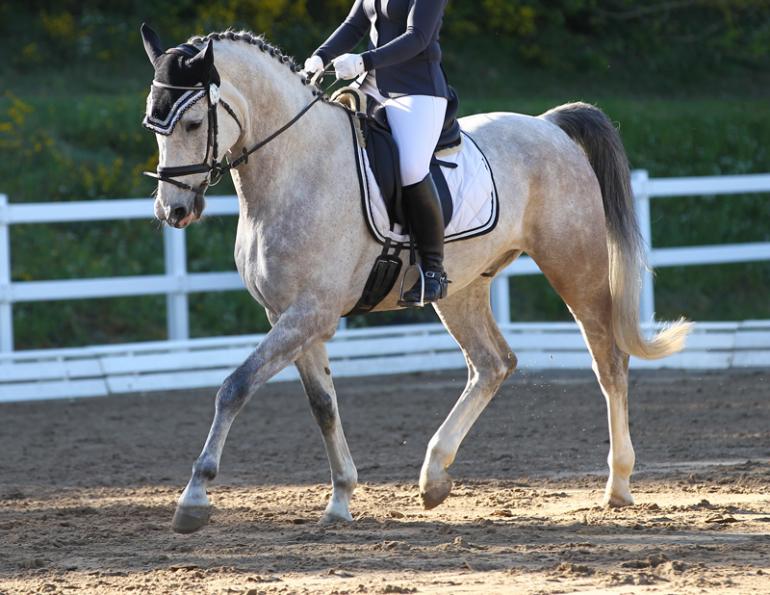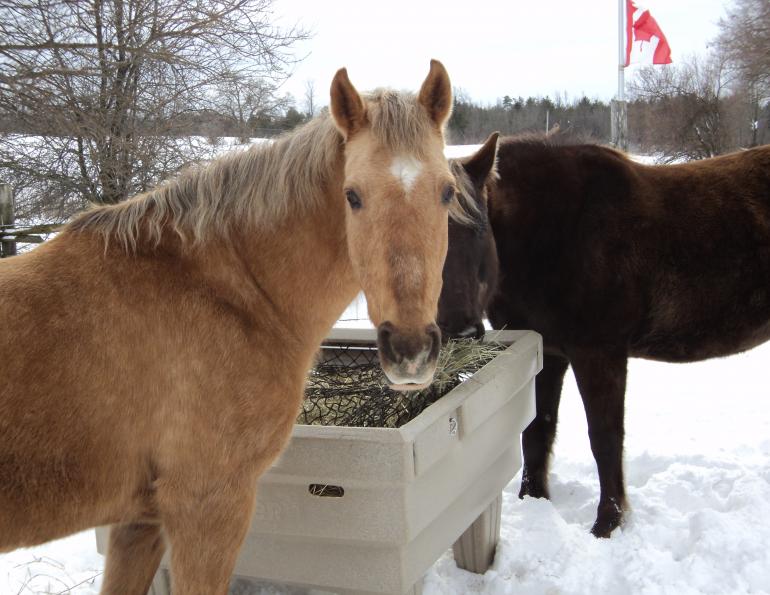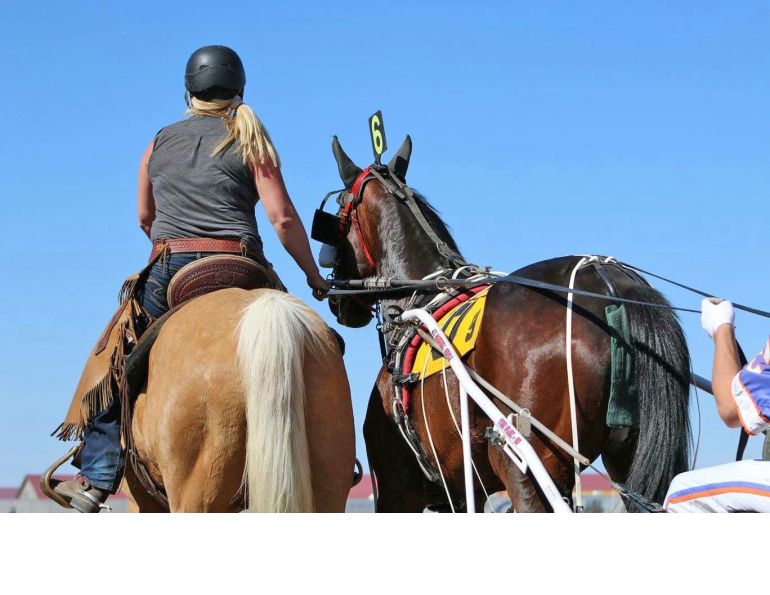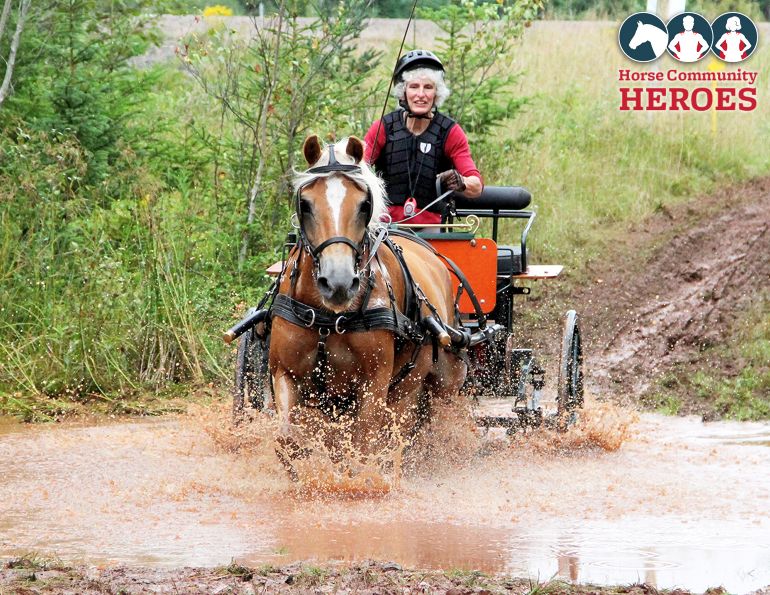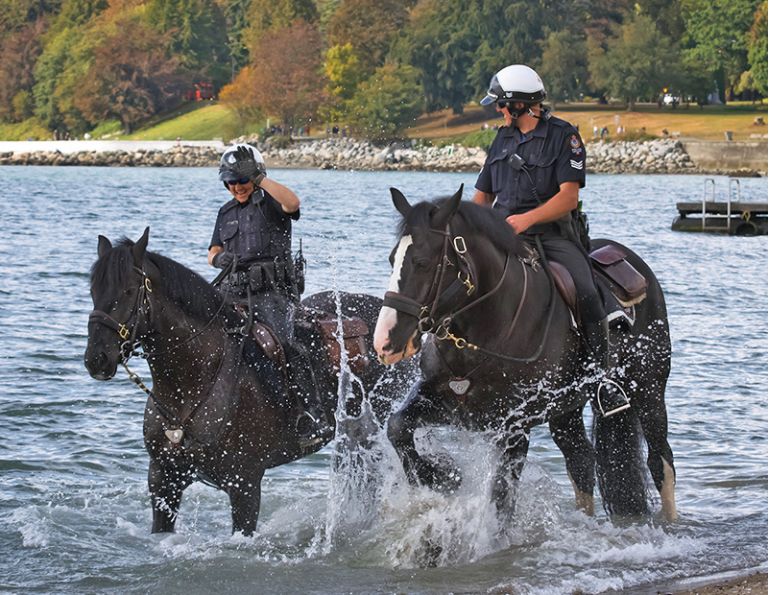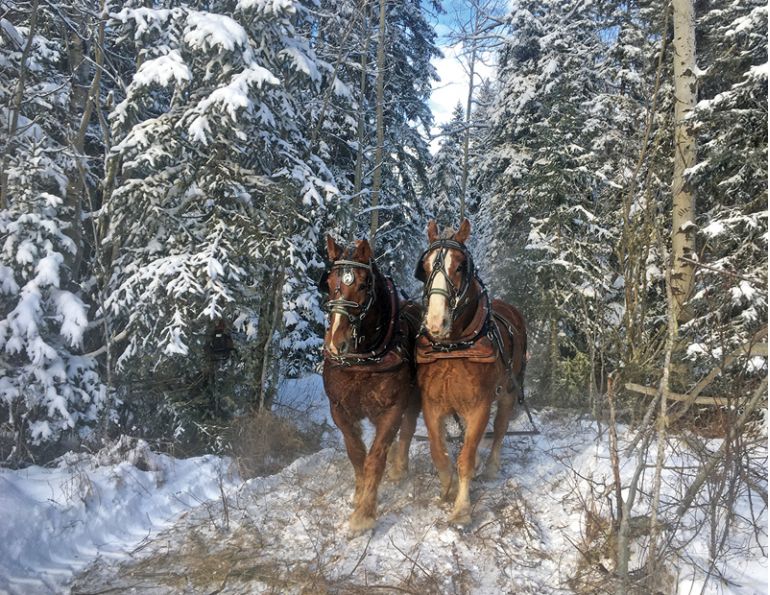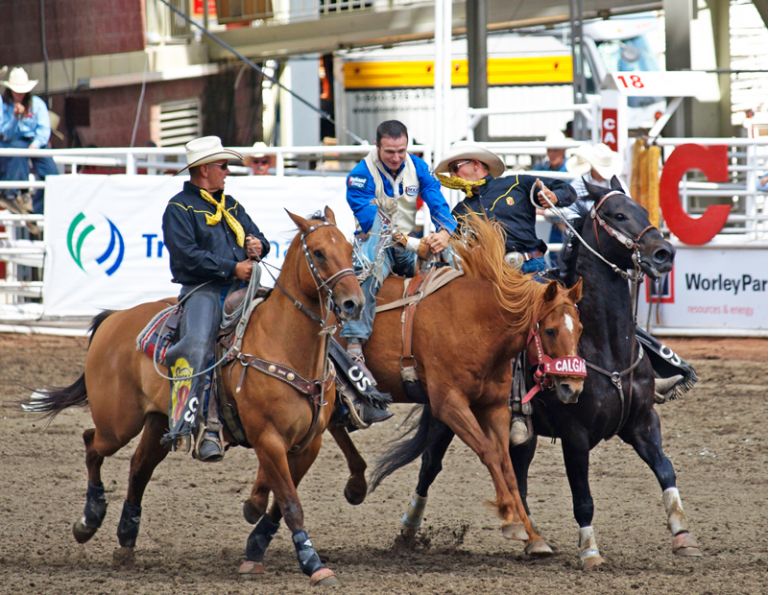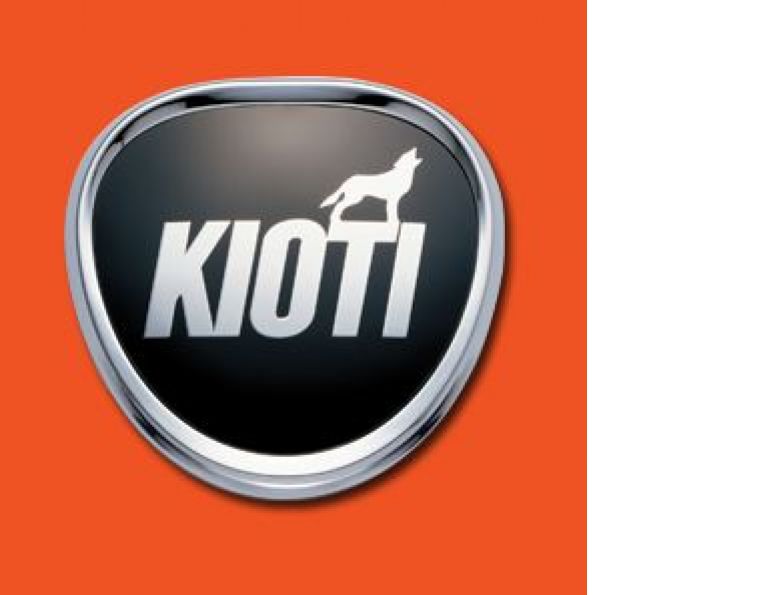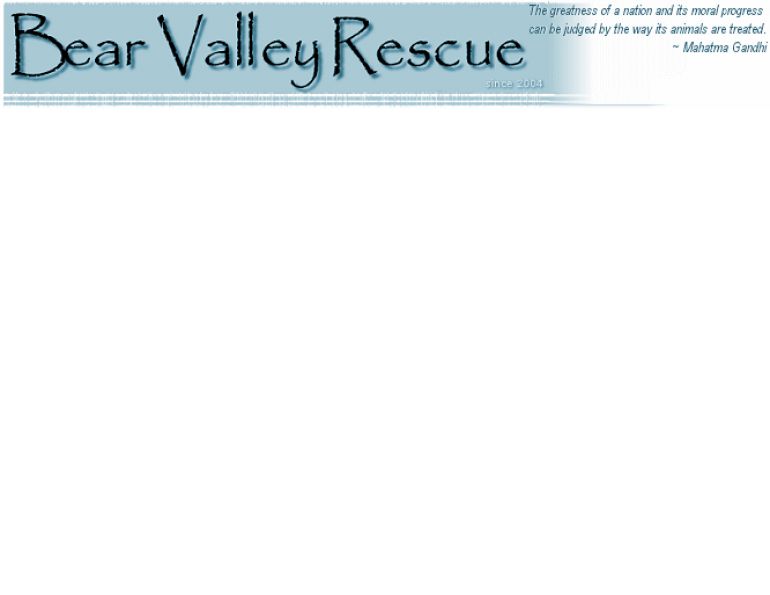By Margaret Evans
Job Description: A draft horse walking beside a canal on a towpath pulls a flat-bottom tow-boat along the canal.
In England, the Romans were the first to build canals as irrigation or land drainage waterways. They used mules to haul boats loaded with cargo along those canals and it became a highly effective and economical way to transport goods. A horse towing a boat with a rope from a towpath could pull 50 times as much cargo as it could pull in a wagon on the road.
As the canal system grew, boats and barges were pulled with horses, mules, ponies, and sometimes a pair of donkeys. The transport system was heavily in use during the Industrial Revolution and continued well into the 1960s. Today, horses pull barges as pleasure vehicles for tourists and vacationers.
“We have two horses, Monty and Drummer,” says Charlotte Butler who, with her husband Stephen, owns Kennet Horse Boat Company in Hungerford, England. “Monty is a nine-year-old Shire-Welsh Cob cross and the most experienced horse. Drummer is four years old and a Clydesdale-Cob cross. He’s new to the business. They are both geldings.”
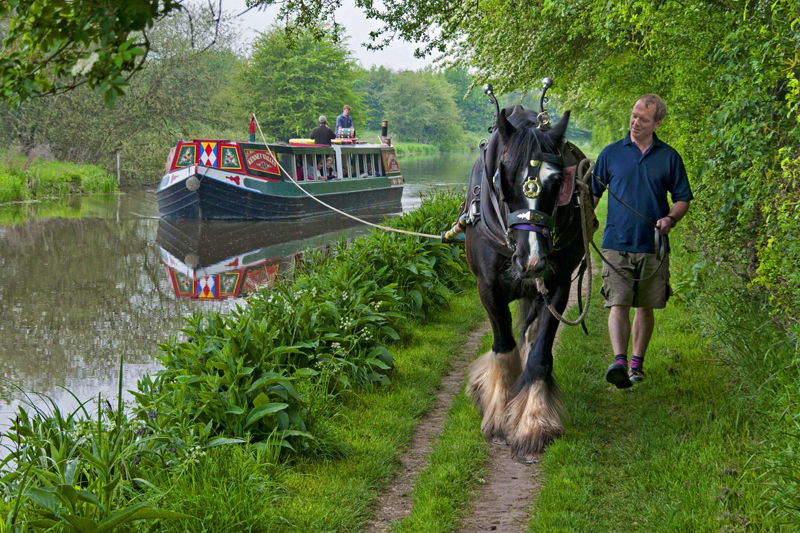
Passengers enjoy a leisurely boat trip along the Kennet and Avon Canal as they soak up the beauty of the countryside. Photo courtesy of Kennet Horse Boat Company
The company was established in 1970 and has been run by the Butler family since 1980. Stephen and Charlotte took it over from Stephen’s parents in 2004.
Their horses are broken to harness on a working farm in North Devon before coming to their facility for on-the-job training.
“Trips vary from day to day, but typically horses do a two- to three-hour trip in the morning and one in the afternoon. A typical trip would be three miles (five kilometres). We usually collect the horse from the field approximately two hours before the first trip. They are groomed and fed and the harness is put on. Customers arrive around half an hour before and meet the horse and take pictures. There is at least one lock in every trip so this gives the horses a chance to rest and graze and customers can disembark from the boat whilst crew do the lock.”
A lock is a device used for raising and lowering boats and barges between stretches of water that are at different levels on canals.
“Once the lock is done, passengers get back on and the trip continues,” she says. “There is an option to walk along with the horse and its handler. Another unique feature is lifting the tow rope over other moored craft which sometimes means the crew climbing on the boat to enable them to lift it high enough.”
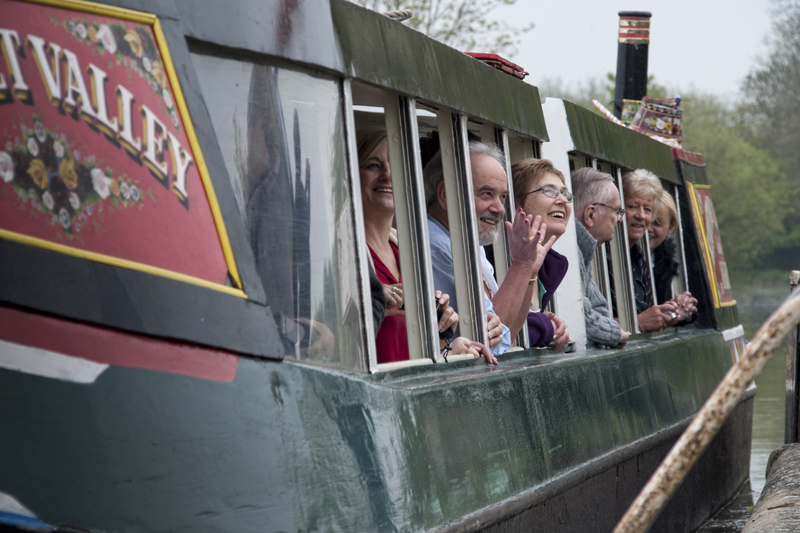
The Kennet Valley barge is a wide-beam passenger trip boat, built in 1976 and painted with roses and castles in keeping with the mid-1800s tradition. It is powered solely by the 1 hp towing action of the horse. Photo courtesy of Kennet Horse Boat Company
Butler said that their horse-drawn barge, Kennet Valley, was purpose-built in 1976. It is painted with roses and castles in keeping with the decorative pattern that was highly fashionable in the mid-1800s. It can carry 64 passengers, weighs 19 tons, and measures 67 feet long (20.5 metres) by 10.5 feet wide (3.2 metres). The glass windows drop down to allow passengers to lean out during the ride. It has full weather protection so the show goes on, even when it rains.
Customers are always surprised at how easily the horse can tow a barge.
“Although the boat weighs 19 tons it can be pulled by a single person even when full due to the fact it is on water,” says Butler. “So, with the silent motion of the boat and with the sound of the hooves it is an enjoyable step back in time. Originally, tow paths were private rights-of-way owned by the canal company, but they are now used by walkers and cyclists as well as our horses. In addition, passengers can enjoy all kinds of wildlife seen along the canal.”
For more information, visit Kennet Horse Boat Company.
Related: Horses with Jobs: Logging Horses
Main article photo courtesy of Kennet Horse Boat Company.




